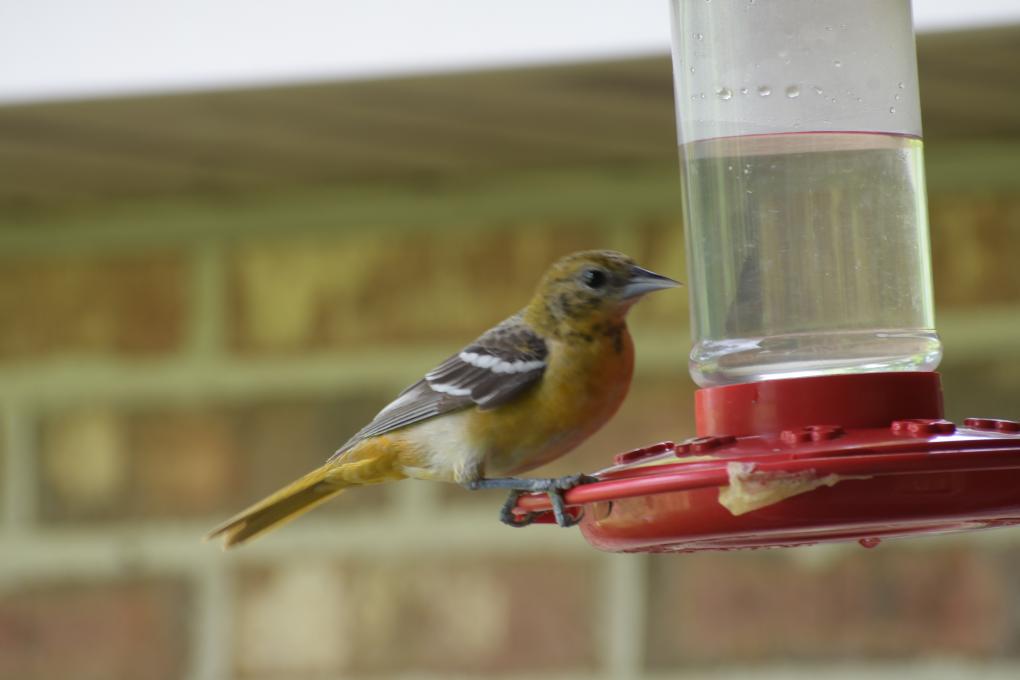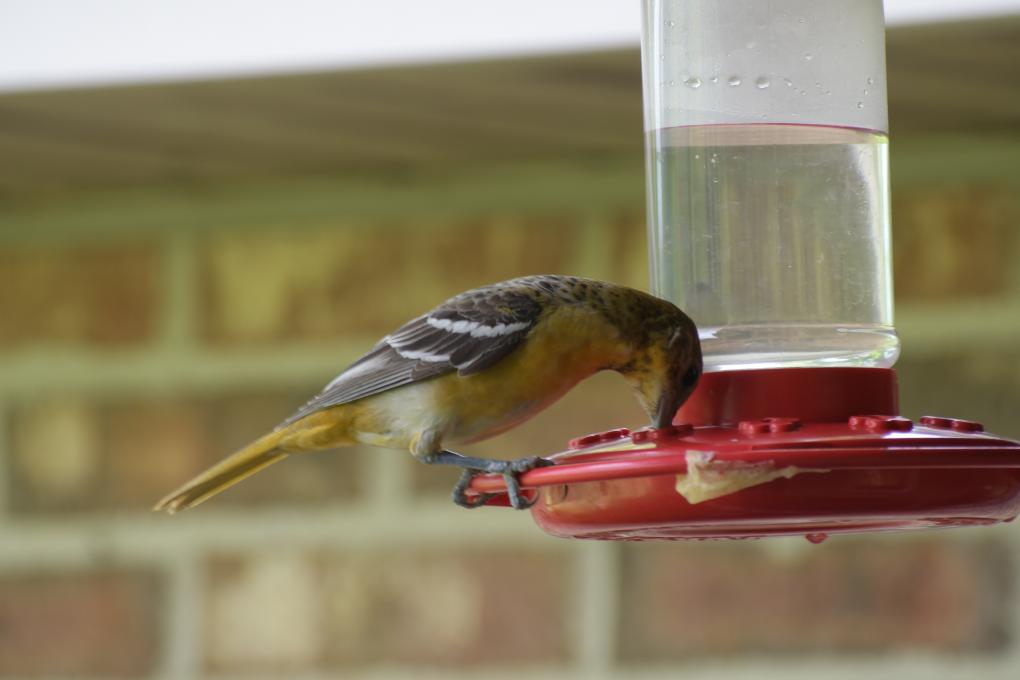James
Forum Replies Created
Viewing 4 posts - 1 through 4 (of 4 total)
-
JamesParticipant
@Carol A little smaller than a Robin.
in reply to: Activities: Bird ID Practice #695295 -
JamesParticipant
@Jay Much too large for American Goldfinch. We have bunches of those but I had not seen this. It is a female Baltimore Oriole I believe. In looking at the Goldfinches through binoculars, they appear much larger than they are. We have them feeding on the ground under the feeder and they are tiny. Thanks for your comment. I have learned much from researching this bird.
in reply to: Activities: Bird ID Practice #695186 -
JamesParticipantActivity 1: Birds identified by shape: Northern Cardinal and House Finch. Activity 2: Birds identified by a common color (red): Northern Cardinal-all red body with black mask extending from face to chin and throat, large red bill and crest. Male House Finch-an orange red face and rump, with brown cap, a white belly with brown streaks. Red-bellied Woodpecker: A zebra-backed woodpecker with a white rump. Red crown extends down nape of neck. Tan breast with a tinge of red on belly which is often hard to see. Activity 3: Food selection practices: House finches tend to visit feeders, and sometimes the ground, for seeds. Mourning Doves will visit feeders and the ground in search of seeds. Brown-headed cowbirds feed on insects and seeds, often visiting feeders and the ground around seeders for spilled seeds. Activity 4: Favorite bird with ID characteristics: Carolina Chickadee is a small, mostly gray bird with a black cap and chin. It has a white face and chin with a tan belly and darker gray tail. It is a year-round bird of the Carolinas and one of the first birds to use a newly placed feeder. I flies to the feeder, grabs a seed, and carries it back to a branch. It will hold the seed down with its feet
 and pound it open with its bill. It then returns to get another seed. By remaining at the feeder for such a short time, it is thus somewhat difficult to photograph.
Photo shows Male House Finch with american Goldfinch. in reply to: Activities: Bird ID Practice #695086
and pound it open with its bill. It then returns to get another seed. By remaining at the feeder for such a short time, it is thus somewhat difficult to photograph.
Photo shows Male House Finch with american Goldfinch. in reply to: Activities: Bird ID Practice #695086 -
JamesParticipantIn doing the activities for bird ID'ing, I came across a bird that I am not familiar with. I tried using Merlin but it responded that it could not ID the bird. Did say that it was rare.

 It resembles the Warbler clan but I find nothing specific. It has brown coloration on the head and wings, orange breast, and white wing bars. Seen in SC today and is about a Robin's size. Coloration similar to finches but bill is longer and bird is bigger. Photographed on two different hummingbird feeders with it actually drinking. in reply to: Activities: Bird ID Practice #694283
It resembles the Warbler clan but I find nothing specific. It has brown coloration on the head and wings, orange breast, and white wing bars. Seen in SC today and is about a Robin's size. Coloration similar to finches but bill is longer and bird is bigger. Photographed on two different hummingbird feeders with it actually drinking. in reply to: Activities: Bird ID Practice #694283
Viewing 4 posts - 1 through 4 (of 4 total)
 and pound it open with its bill. It then returns to get another seed. By remaining at the feeder for such a short time, it is thus somewhat difficult to photograph.
Photo shows Male House Finch with american Goldfinch.
and pound it open with its bill. It then returns to get another seed. By remaining at the feeder for such a short time, it is thus somewhat difficult to photograph.
Photo shows Male House Finch with american Goldfinch. 
 It resembles the Warbler clan but I find nothing specific. It has brown coloration on the head and wings, orange breast, and white wing bars. Seen in SC today and is about a Robin's size. Coloration similar to finches but bill is longer and bird is bigger. Photographed on two different hummingbird feeders with it actually drinking.
It resembles the Warbler clan but I find nothing specific. It has brown coloration on the head and wings, orange breast, and white wing bars. Seen in SC today and is about a Robin's size. Coloration similar to finches but bill is longer and bird is bigger. Photographed on two different hummingbird feeders with it actually drinking.